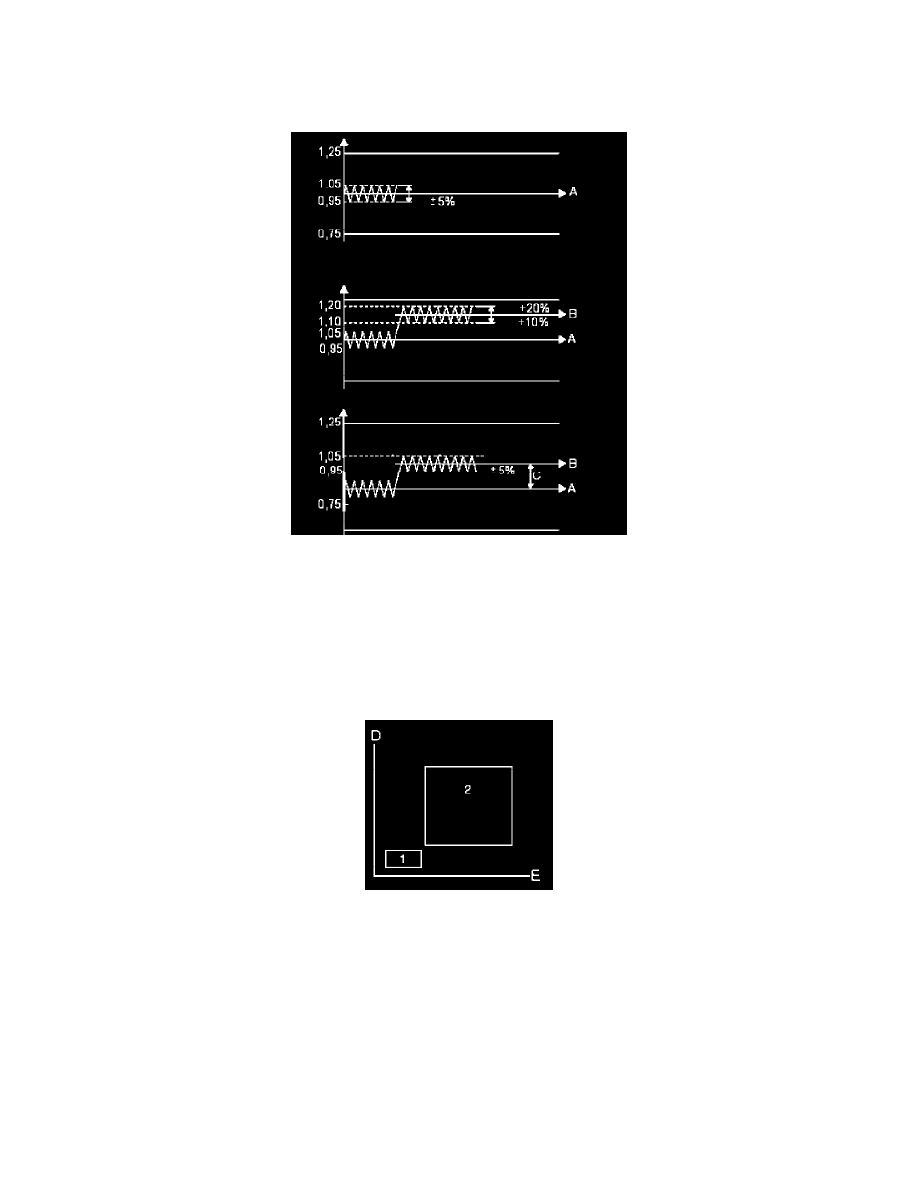V50 L5-2.4L VIN 39 B5244S7 (2005)

Engine Control Module: Description and Operation
Adaptive Functions
Adaptive Functions
Certain factors, such as deviations in tolerance for certain components such as the mass air flow (MAF) sensor and injectors, intake air leakage, fuel
pressure etc, will affect the composition of the fuel air mixture. To compensate for this, the engine control module (ECM) has adaptive (self learning)
functions. When the engine is new, the short-term fuel trim is assumed to vary cyclically around a nominal center line (A) 1.00 with, for example, a ± 5%
change in the injection period when fuel trim is active.
If there is air leakage the short-term fuel trim will be offset to a new position (B) and will then work for example between 1.10 (+10%) and 1.20 (+20%),
although still at an amplitude of 5%, but with an offset in relation to the original center line (A). The injection period has then been increased to
compensate the increase in the amount of air. The adaptive functions will correct the change, so that the short-term fuel trim will work around the new
center line (B) where it will again have its full range of control available.
Put simply, fuel trim is a measurement of the difference (C) between the original short-term fuel trim center line (A) and the new center line (B). The
adaptive functions consist of two sections and correspond to the different operating ranges of the engine, load (D) and engine speed (E):
-
Additive adaptation (1) is when the engine is idling. This is how the control module adjusts the CO content at idle speed. Long-term fuel trim,
idling can be read off using Vehicle Information and Diagnostics Application (VIDA).
-
Multiplicative adaptation (2), carried at loads and engine speeds above idle. Long-term fuel trim, the load can be read off using Vehicle
Information and Diagnostics Application (VIDA).
The adaptive adjustments of the injection period are stored continuously in the control module. This means that under different operating conditions the
fuel air mixture is obtained before the heated oxygen sensor (HO2S) is warm enough to function.
A diagnostic trouble code (DTC) will be stored in the control module if any adaptation value is too high or too low. For further information, also See,
Heated oxygen sensor (HO2S) diagnostic.
